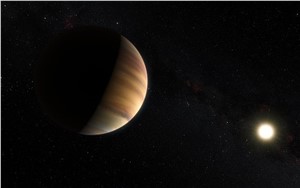
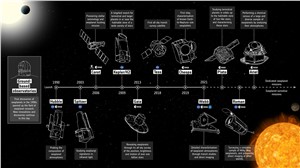
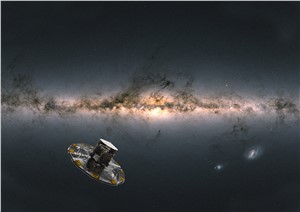
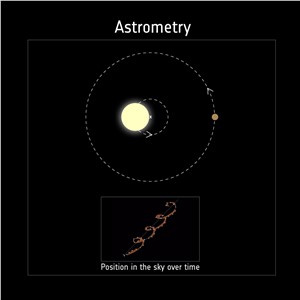
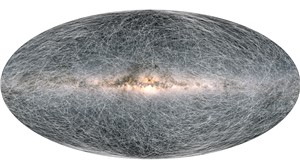
Have you ever looked up at the night sky and wondered if there are other planets out there beyond our Solar System?
This question remained an enigma for scientists until just over 30 years ago. In fact, despite the existence of planets beyond our Solar System being hypothesised, it wasn't until 1992 that the first definite detection occurred. That year, Aleksander Wolszczan and Dale Frail discovered PSR B1257+12 b. A few years later, in 1995, Michel Mayor and Didier Queloz detected the first planet orbiting a star like our Sun, named 51 Pegasi b. This discovery was crucial as it paved the way for the search for exoplanets in star systems like ours. For the first time, astronomers had the certainty that our Solar System was not unique. The hunt for other planetary systems had begun, and an exciting new field of astrophysics had been born: the science of exoplanets.
But why are exoplanets so fascinating? Well, think about it. They could be like Earth, or perhaps totally different. And in both cases it would be an extremely intriguing discovery. The confirmation of the first exoplanet shook our understanding of the Universe. It made us wonder if life exists beyond our planet and if it's possible to find other planets like our Earth. And if our planet, which has all the necessary characteristics for the emergence of life, is unique.

By Orbit Type (LEO, MEO, GEO, Others), by Architecture (Transparent Payload, Regenerative Payload), by Service Type (Fixed Satellite Service, Mobile Satellite Service, Broadband Satellite Service, Others), by End-User (Telecommunication, Government, Defense, Aviation, Others) and Region, with Forecasts from 2025 to 2034
Download free sample pagesSo, now that we know they exist, how do we find these distant worlds? There are multiple available methods: direct methods try to identify the planet itself, while indirect methods deduce its presence by observing the effect the planet has on the star around which it orbits. While the first type involves pointing a telescope at a star and taking a picture of its companion, the second type of method focuses, for example, on observing small dips in the apparent brightness of a star when a planet passes in front of it or on detecting minute oscillations in the position of a star caused by an orbiting planet. The combination of all these methods has allowed the detection of over 5000 celestial bodies to date, which constitute the catalogue of known exoplanets.
To conduct these investigations, space detectives are needed: scientific spacecraft capable of studying these celestial bodies. ESA has its dedicated fleet of exoplanet science missions, illustrated in this image and in this video. Some of them, designed within the last decade, are specifically aimed at studying exoplanets. Examples are Cheops, the Characterising Exoplanet Satellite, a satellite that characterises known exoplanets, and the James Webb Space Telescope, which provides detailed observations of exoplanetary atmospheres. There are also two future missions in the ESA family: Ariel, which aims to study the atmospheres of exoplanets, and Plato, which seeks new exoplanets and studies stars to understand the formation of planetary systems.
In addition to these missions, specifically developed for the search and characterisation of exoplanets, another mission plays a key role in this field: Gaia.
"Exoplanet science wouldn’t be the same without Gaia"
Maximilian Günther, ESA Cheops Mission Project Scientist
Gaia is a cosmic cartographer, mapping out the positions, movements, and other details of over a billion stars in our galaxy and beyond. While Gaia's main task is to study stars, it is also a treasure trove for finding planets beyond our Solar System. A novel possibility to detect exoplanets is through astrometry, which involves measuring the exact positions of stars. Monitoring star positions over long periods of time, as Gaia does, reveals tiny motions caused by otherwise unseen planets orbiting them. These measurements must be very precise to detect this small effect, much like finding a needle in a haystack. Gaia's instruments achieve a precision never seen before, making this difficult challenge uniquely possible. With two major data releases still to come, DR4 (expected no sooner than the end of 2025) and DR5, Gaia will produce all-sky exoplanet catalogues containing thousands of new planets.
"If we want to understand how planets are formed, it is necessary to have a vision of how the whole planetary system is composed. Currently, our vision of most systems is only partial because each detection technique is efficient for a certain range of planet sizes and orbital periods. Being able to combine all techniques and data is critical to understand what planetary systems look like and to put our Solar System in context. We still have many questions to investigate. Having more detections of exoplanets with diverse characteristics offers a clearer view of the statistical trends and their implications. The dependence on the galactic environment may also be a key factor: it is important to complete our current picture with planetary systems in more diverse and distant regions of the galaxy."
Ana Heras, ESA Plato Mission Project Scientist

-The first confirmed exoplanet found by Gaia’s ability to sense the ‘wobble’ a planet induces on its star.
Planets discovered by Gaia will typically have masses greater than those of Earth. Gaia will not be able to find any "Earth twin"; nevertheless, adding planets to the catalogue is important: a larger sample allows us to better understand the characteristics and occurrences of the different types of planets that make up the exoplanet zoo.
"If we want to understand Earth-like planets, how they form, how they evolve, and what their atmospheres are composed of, we absolutely also need to understand the formation and evolution of the largest planets. Even if we look for habitability in other systems, it is necessary to understand the whole system and its chemistry and dynamics, including the gas giant planets. Take our own Solar System as an example: Jupiter and Saturn are important for the orbit of Earth, and thus for the development of life. If Saturn had been on a more elliptical orbit or closer to the Sun, Earth's climate would have developed in a very different way – and this is just one example. The large planets therefore also play a crucial role in the evolution and the habitability of the smaller ones."
Theresa Lüftinger, ESA Ariel Mission Project Scientist
But Gaia's contribution doesn't stop there. The mission also helps us to study the characteristics of the stars around which exoplanets orbit. By collecting properties like size, temperature, and age, we can learn more about the planets themselves. In fact, knowing the characteristics of a star is crucial for studying the planet orbiting it. It provides fundamental information about the environment and conditions in which the star and planet formed and evolved, influencing its composition, atmosphere, and physical properties. These data, collected in Gaia's star catalogue, serve as a reference point for all other ESA missions focusing on extrasolar planets, both in selecting which planets to observe and in deducing their characteristics.
"Knowing the characteristics of exoplanet host stars is fundamental. In fact, stars and planets interact directly with each other. The star plays a fundamental role in the evolution of the planet: the same planet around a different star could have developed in a completely different way. For this reason, it is important to know the characteristics of the star, and this knowledge provided by Gaia is increasingly recognised within the exoplanet community."
Theresa Lüftinger, ESA Ariel Mission Project Scientist
ESA missions thus work in optimal synergy, making the most of the data discovered by the Gaia space telescope.
"To determine the properties of exoplanets accurately and precisely, we need to have the best possible knowledge of their host starts. Our exoplanet missions would not be able to achieve as detailed insights as they do without Gaia's help."
Maximilian Günther, ESA Cheops Mission Project Scientist
In conclusion, Gaia emerges as a crucial catalyst for the study of exoplanets. With its ability to perform extremely precise astrometric measurements, the mission will soon bring about a paradigm shift in the research area of exoplanets. With the upcoming fourth data release, Gaia is expected to unveil thousands of new planets that will complement the exoplanet zoo we know to date. Furthermore, Gaia will continue to contribute to the characterisation of the host stars of planets, enabling a better understanding of the formation and evolution of planetary systems. Gaia opens new avenues in the search for and study of exoplanets, enriching our understanding of the Universe and its diverse planetary facets.